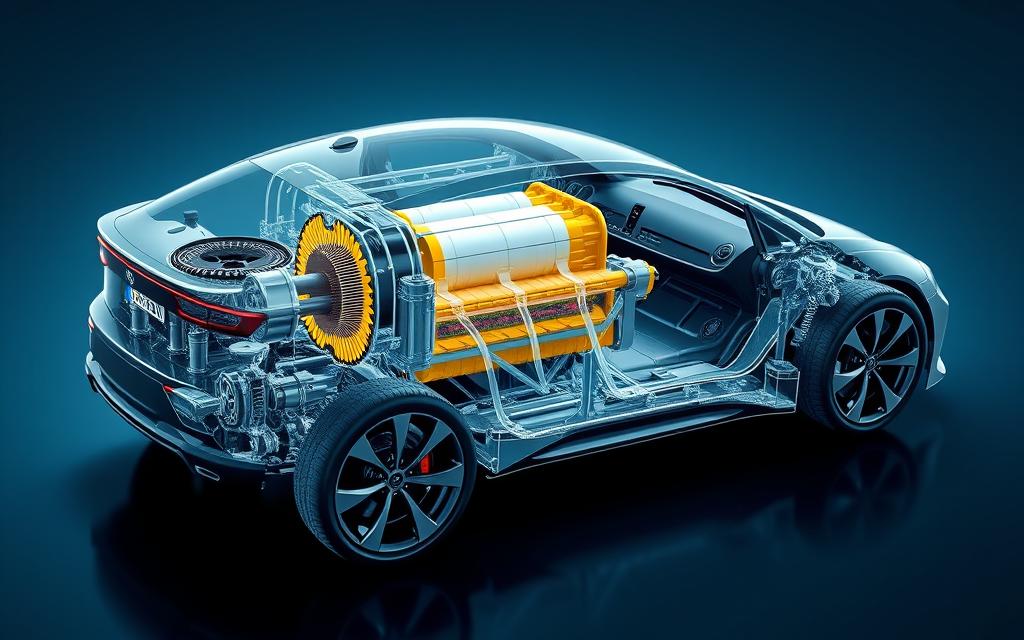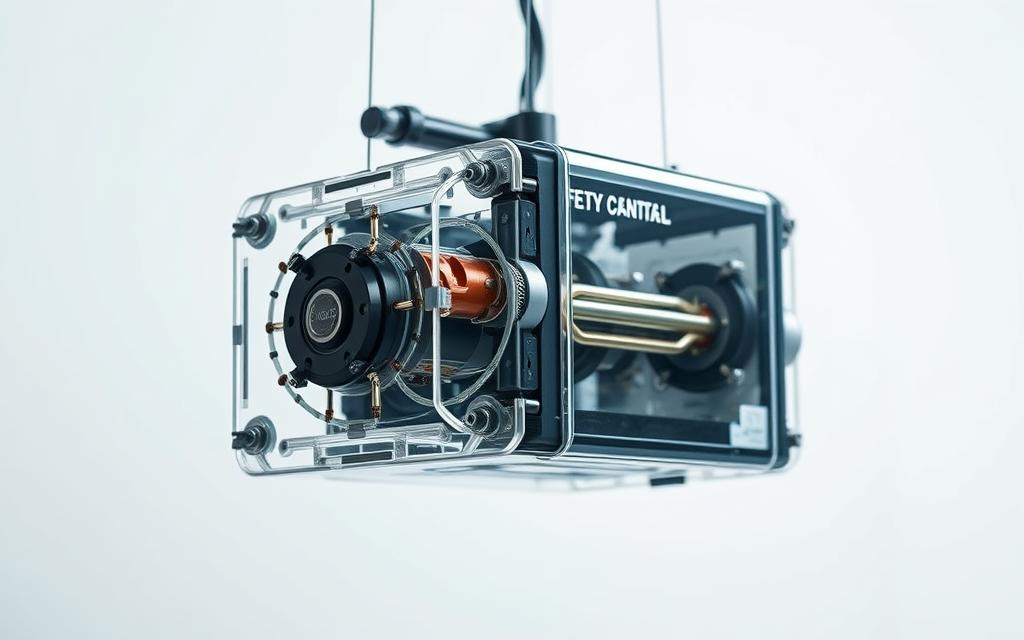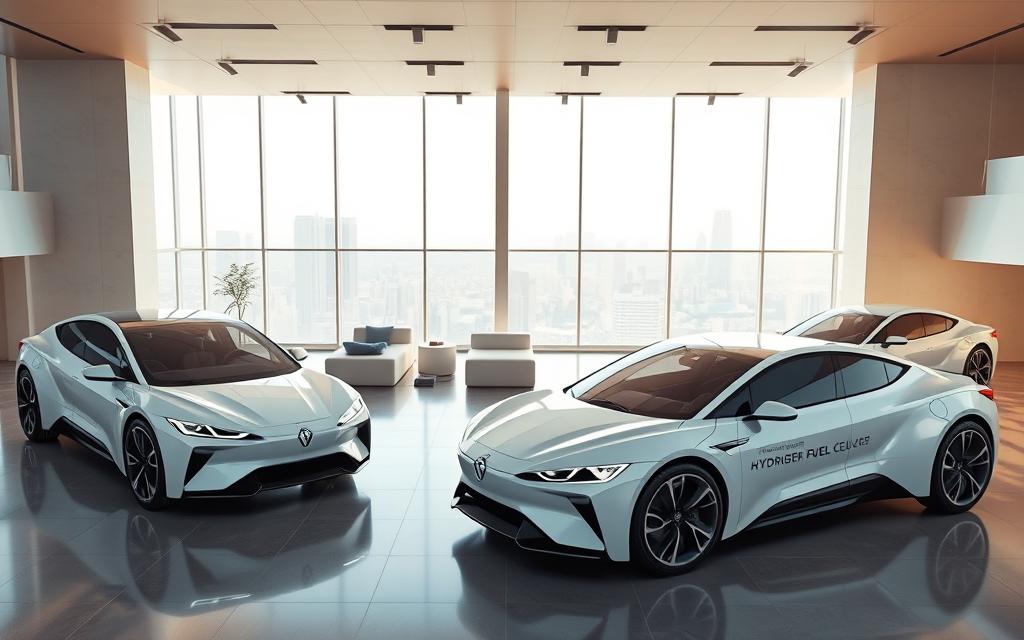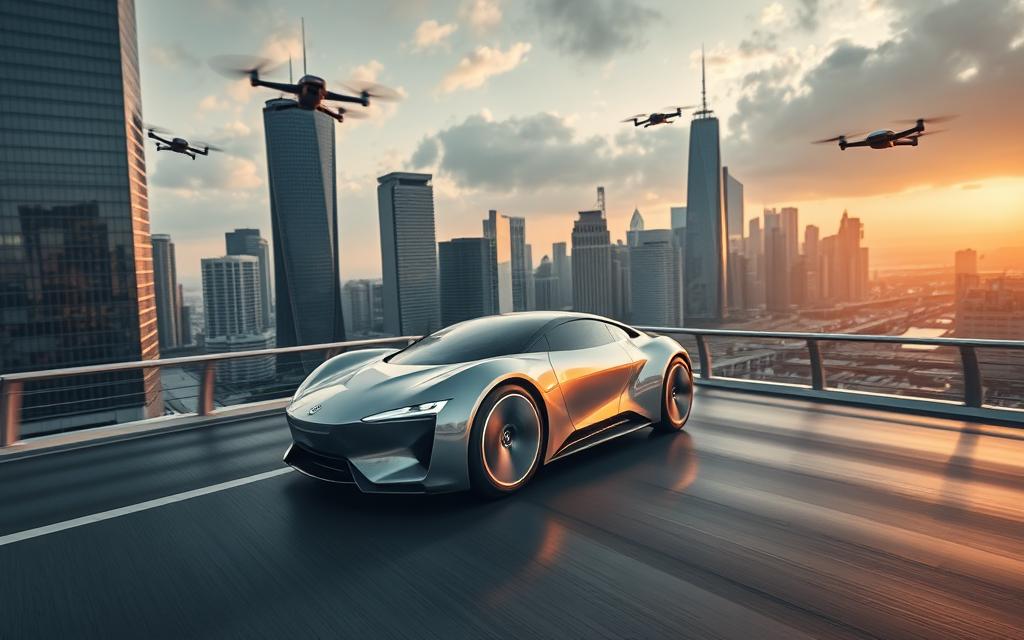Fuel cell technology powers vehicles through an electrochemical process. It combines hydrogen and oxygen to generate electricity, heat, and water. This method offers a clean energy alternative to traditional combustion engines and battery-powered electric vehicles.
One of the key advantages is zero tailpipe emissions. This makes it an eco-friendly solution for modern transportation. Companies like Toyota are leading the charge with their hydrogen-powered models, showcasing innovation in their electrified lineup.
Stellantis is also making strides with their Fuel Cell Electric Vehicles (FCEVs). These vehicles are designed for commercial use, offering impressive ranges of 249 to 311 miles. Renault’s HYVIA joint venture is another example, producing hydrogen-powered light commercial vehicles like the Master Van H2-TECH.
As the automotive industry evolves, hydrogen fuel cell technology is becoming a viable option for sustainable mobility. It combines efficiency with environmental responsibility, paving the way for a greener future.
Introduction to Fuel Cell Technology in Cars
Hydrogen-powered vehicles rely on a unique electrochemical process to generate energy. Unlike traditional combustion engines, these systems use hydrogen fuel cells to produce electricity, heat, and water. This method is both efficient and environmentally friendly.
What is Fuel Cell Technology?
At the core of this system is a redox reaction. Hydrogen splits into electrons and ions at the anode, while oxygen combines with ions at the cathode to form water. This chemical reaction generates the energy needed to power the vehicle’s electric motor.
Fuel cells differ from batteries in a key way. While batteries store energy, fuel cells convert it directly from hydrogen and oxygen. This makes them a dynamic solution for modern transportation needs.
Brief History of Fuel Cell Vehicles
The journey of hydrogen-powered vehicles began with NASA’s use of fuel cells in space missions. Toyota took a significant step in 1992 by starting development on hydrogen systems. Their 2014 Mirai became a landmark in the industry.
Stellantis joined the movement in 2024, launching in-house production of hybrid commercial vans. Meanwhile, Renault’s 2014 Kangoo Z.E. Hydrogen marked an early commercial application. Today, Symbio’s gigafactory stands as Europe’s largest production site for fuel cells, driving innovation forward.
How Does Fuel Cell Technology Work in Cars?
Hydrogen-based systems in cars transform chemical energy into electricity. This process involves storing hydrogen in high-pressure tanks and drawing oxygen from the air. Together, these elements create a clean and efficient energy cycle.

The Basic Mechanism of Hydrogen Fuel Cells
At the heart of the system is the proton exchange membrane (PEM). Hydrogen atoms split into protons and electrons at the anode. The protons pass through the membrane, while electrons create an electric current.
Oxygen from the air combines with protons and electrons at the cathode. This reaction produces water vapor as the only byproduct. The process is both efficient and environmentally friendly.
Chemical Reactions in Fuel Cells
The chemical reactions in a fuel cell are simple yet powerful. Hydrogen is oxidized at the anode, releasing electrons. Oxygen is reduced at the cathode, forming water. This redox reaction generates the electricity needed to power the vehicle.
Unlike traditional engines, this process produces no harmful emissions. It’s a sustainable solution for modern transportation needs.
Role of the Electric Motor and Battery
The electric motor is powered by the electricity generated by the fuel cell. In systems like Toyota’s, energy is recaptured during braking and stored in a battery. This enhances efficiency and reduces waste.
Stellantis’ mid-power architecture uses hydrogen for range and a battery for acceleration. This synergy ensures optimal performance and energy use.
| System Type | Hydrogen Role | Battery Role |
|---|---|---|
| Mid-Power (Stellantis) | Provides energy for range | Handles acceleration |
| Full-Power/Range-Extender | Primary energy source | Supplements power |
Benefits of Fuel Cell Technology in Cars
Modern transportation is embracing hydrogen as a sustainable energy source. This shift brings numerous advantages, from environmental benefits to improved performance. Let’s explore how hydrogen-powered systems are transforming the automotive industry.
Environmental Advantages
One of the most significant benefits is the reduction in harmful emissions. Toyota’s hydrogen-powered vehicles, for example, emit only water vapor. This makes them a zero-emission solution for eco-conscious drivers.
When green hydrogen is used, the entire process becomes 100% emission-free. This is a game-changer for reducing the carbon footprint of transportation. As Stellantis demonstrates, their FCEVs achieve an impressive efficiency of 0.76 kg H2/100 km.
Efficiency and Performance
Hydrogen systems are not just clean; they’re also highly efficient. Refueling takes only 3-5 minutes, compared to hours for traditional electric cars. This makes them ideal for long-distance driving and commercial use.
Stellantis’ large vans, for instance, offer a range of up to 311 miles. This is perfect for logistics and delivery services. Toyota’s dual-use systems also stand out, using hydrogen for both propulsion and auxiliary power.
Reduced Dependence on Fossil Fuels
Hydrogen-powered vehicles reduce reliance on traditional fuels. Renault’s ability to retrofit electric kits adds hybrid flexibility, making it easier for businesses to transition. This approach supports a more sustainable energy future.
By leveraging hydrogen, the automotive industry can move toward cleaner and more efficient solutions. This not only benefits the environment but also enhances the overall energy landscape.
| Feature | Benefit |
|---|---|
| Zero Emissions | Environmentally friendly |
| Quick Refueling | Convenient for long trips |
| High Range | Ideal for commercial use |
“Hydrogen is the future of clean transportation, offering both efficiency and sustainability.”
Safety of Fuel Cell Vehicles
Safety is a top priority in the design and operation of hydrogen fuel systems. Manufacturers like Toyota and Stellantis have implemented advanced engineering and rigorous testing to ensure reliability. These measures make hydrogen-powered vehicles a secure option for modern transportation.

Safety Measures in Hydrogen Fuel Cell Cars
Hydrogen vehicles use carbon-fiber tanks designed to withstand extreme conditions. Toyota’s tanks, for example, can handle 2.25 times the operating pressure. Pressure-release mechanisms ensure that hydrogen disperses quickly in case of a leak, reducing risks.
Stellantis conducts rigorous testing for extreme temperatures and collisions. Their systems are built to vent hydrogen safely, minimizing hazards. Renault’s HYVIA models, developed through their joint venture, meet strict EU safety standards, ensuring reliability in real-world scenarios.
Comparing Safety with Traditional and Electric Vehicles
Hydrogen’s rapid dissipation makes it safer than gasoline, which pools and poses a higher explosive risk. In crashes, hydrogen vents quickly, reducing fire hazards. This contrasts with electric vehicles, where battery fires can be harder to control.
Hydrogen systems are also tested under extreme conditions, ensuring they perform reliably. This makes them a secure alternative to both traditional and electric vehicles.
| Vehicle Type | Safety Feature |
|---|---|
| Hydrogen Vehicles | Rapid hydrogen dissipation, carbon-fiber tanks |
| Gasoline Vehicles | Higher explosive risk, fuel pooling |
| Electric Vehicles | Battery fire risks, longer containment times |
Current Models and Market Availability
The automotive market is seeing a rise in hydrogen-powered models. Leading manufacturers are introducing innovative vehicles that combine efficiency with sustainability. These cars are becoming more accessible, though availability varies by region.

Leading Manufacturers and Their Offerings
Toyota is a pioneer in this space with its Mirai model. This hydrogen vehicle boasts a range of 402 miles and a starting price of $49,500. It’s currently available in California, where hydrogen infrastructure is more developed.
In Europe, Stellantis offers a lineup of hydrogen-powered vans, including the Citroën ë-Jumpy and Fiat E-Ducato. These vehicles are designed for commercial use, providing a sustainable solution for logistics and delivery services.
Renault’s HYVIA joint venture has introduced the Master Van H2-TECH, a light commercial car available in Europe. These models are tailored for businesses looking to reduce their carbon footprint.
Availability in the United States
While hydrogen cars are gaining traction, infrastructure remains a challenge. The U.S. has only 59 hydrogen refueling stations, compared to over 150,000 EV chargers. This limits the widespread adoption of fuel cell vehicles.
Hyundai’s Nexo is another option, though its availability is limited to select states. California’s H2 Mobility Initiative is working to expand refueling networks, making hydrogen vehicles more practical for American drivers.
Despite these hurdles, the United States is gradually embracing hydrogen as a clean energy solution. With continued investment in infrastructure, the future looks promising for hydrogen-powered cars.
The Future of Fuel Cell Technology in Cars
The automotive industry is rapidly evolving with hydrogen as a key player in clean energy solutions. From breakthroughs in storage to advancements in infrastructure, hydrogen-powered systems are paving the way for a greener future. Let’s explore the innovations, challenges, and opportunities shaping this transformative technology.

Innovations and Developments
Symbio’s gigafactory is a prime example of progress, aiming to produce 50,000 fuel cells annually by 2026. This facility is set to become Europe’s largest production site, driving efficiency and scalability. Meanwhile, Renault’s Scenic Vision concept combines hydrogen and battery tech, offering a dual-power solution for enhanced performance.
Solid-state hydrogen storage is another breakthrough, promising lighter and more efficient tanks. These innovations are crucial for improving vehicle range and reducing costs. By 2030, the industry targets a cost reduction to $50/kW, making hydrogen systems more accessible.
Challenges and Opportunities
Despite advancements, infrastructure remains a hurdle. The U.S. alone requires $20 billion by 2035 to build a robust hydrogen refueling network. However, initiatives like the DOE’s $7 billion Hydrogen Hub program are addressing this gap, boosting production and distribution.
Long-haul trucking and public transit are emerging as key areas for adoption. Hydrogen’s quick refueling and high range make it ideal for these sectors. As costs decrease and infrastructure expands, the potential for widespread use grows.
Role in the Future of Clean Energy Vehicles
Hydrogen is poised to play a vital role in the transition to clean energy vehicles. Its zero-emission output and efficiency align with global sustainability goals. As electric vehicles gain traction, hydrogen complements this shift by offering solutions for sectors where batteries fall short.
“Hydrogen is not just an alternative; it’s a cornerstone of the clean energy future.”
With continued investment and innovation, hydrogen-powered systems will become a cornerstone of sustainable transportation, driving us toward a cleaner, greener tomorrow.
Conclusion
Hydrogen-powered systems are reshaping the future of clean energy vehicles. Combining EV-like efficiency with rapid refueling, they offer a dual advantage for modern transportation. Commercial fleets, led by brands like Stellantis and Renault, are embracing this technology for its long range and eco-friendly benefits.
Policy support, such as green hydrogen production tax credits, is crucial for scaling adoption. These vehicles complement battery-electric models, providing solutions for sectors where traditional EVs fall short. Together, they drive the transition to a sustainable future.
For those interested in exploring hybrid and electric options, Toyota Vacaville offers test drives to experience innovation firsthand. The road to decarbonized transport is clear, and hydrogen is paving the way.







